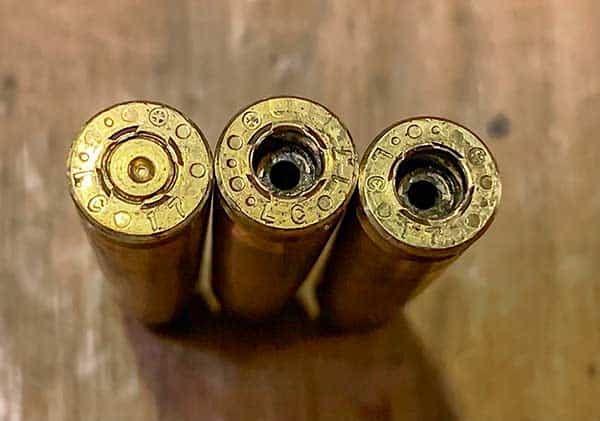The Best Strategy To Use For Rifle Primers
Table of ContentsFederal Primers Things To Know Before You Get ThisSome Known Questions About Reloading Primers.An Unbiased View of Rifle Primers6 Easy Facts About Federal Primers DescribedHow Pistol Primers can Save You Time, Stress, and Money.
Component of the firearm cartridge for initiating propellant burning In guns as well as artillery, the guide () is the chemical and/or device in charge of launching the propellant burning that will push the projectiles out of the gun barrel. In very early black powder guns such as muzzleloaders, the guide was basically the exact same chemical as the primary propellant (albeit normally in a finer-powdered form), but poured into an external flash frying pan, where maybe sparked by an ignition source such as a sluggish match or a flintlock Some muzzleloaders have guides like cap weapon caps.
In artillery the primers are often a separate part, put inside the barrel to the back of the major propellant chargebut there are various other instances of guns, including for example some automated weapons, created to fire cartridges with essential electric guides.
The 20-Second Trick For Remington Primers

With the development of hand-held firearms, this ended up being an unwanted method of firing a gun. Holding a burning stick while trying to pour a charge of black powder meticulously down a barrel is harmful, and also attempting to hold the gun with one hand while concurrently aiming at the target and also looking for the touchhole makes it really challenging to fire properly. The first effort to make the process of shooting a small arm simpler was the "matchlock".
The match was a slow-burning fuse constructed from plant fibers that were saturated in an option of nitrates, charcoal, as well as sulfur, and dried (https://www.businessdocker.com/author/relodprim3rs/). This "slow-match" was stired up before the weapon was required, and it would gradually burn, keeping a hot ember at the burning end. After the gun was filled and also the touchhole keyed with powder, the burning tip of the match was placed to ensure that the lock would certainly bring it right into call with the touchhole.
All about Primers In Stock
This brought the match down to the touchhole, firing up the powder - https://k12.instructure.com/eportfolios/294170. With mindful interest, the slow-burning suit could be maintained shedding for lengthy periods of time, and also the usage of the lock device made relatively precise fire feasible. The following transformation in ignition technology was the "wheel-lock".

The covered flashpan likewise provided some capacity to withstand negative climate. remington primers. Wind, rainfall, and also wet weather would render a matchlock pointless, but a wheel-lock that was filled as well as waterproofed with a little bit of oil around the flashpan might be discharged under many conditions. The wheel-lock delighted in just a brief duration of appeal prior to being superseded by an easier, extra durable design.
Federal Primers Fundamentals Explained
As the name indicates, the flintlock used flint instead than iron pyrite. The flint was kept in a spring-loaded arm, called the "penis" from the similarity of its movement to a pecking chicken. The penis rotated with around a 90-degree arc as well as was held in the tensioned, or "cocked" placement by a trigger. https://woolly-diploma-8a9.notion.site/The-Pistol-Primers-Diaries-7a343ae05a6a4c81b3b312f4ef4f31d6.
The "half-cock" placement held the dick midway back, and utilized a deep notch to ensure that shooting would not release the penis. Half-cock was a safety placement, made use of when loading, saving or carrying a crammed flintlock. The "full-cock" position held the cock right back as well as was the placement from which the weapon was terminated.
It acted as both a flashpan cover as well as a steel striking surface for the flint. The frizzen was hinged as well as spring-loaded to ensure that it would lock in the open or closed setting. click to investigate When closed, the striking surface was placed to make sure that the flint would strike at the appropriate angle to create a stimulate.
How Rifle Primers can Save You Time, Stress, and Money.
The flintlock system was easier and also stronger than the wheel-lock, as well as the flint and also steel supplied a good, reputable source of ignition. The flintlock remained in army solution for over 200 years, and flintlocks are still made today for historic re-enactments and also muzzle-loading target competitors, as well as for seekers who appreciate the extra challenge that the flintlock offers.
By the center of the 19th century, the percussion or caplock system was well developed., as it was easier and a lot more reliable than the flintlock.
The flashpan and frizzen were gotten rid of as well as changed by a little, hollow straight cyndrical tube (drum) screwed right into the bored-out and also touched flash opening and also lugging a "nipple" over which the cap might be fitted. A "hammer" which additionally had half-cock (for loading and using the cap) and also full-cock positions changed the dick.